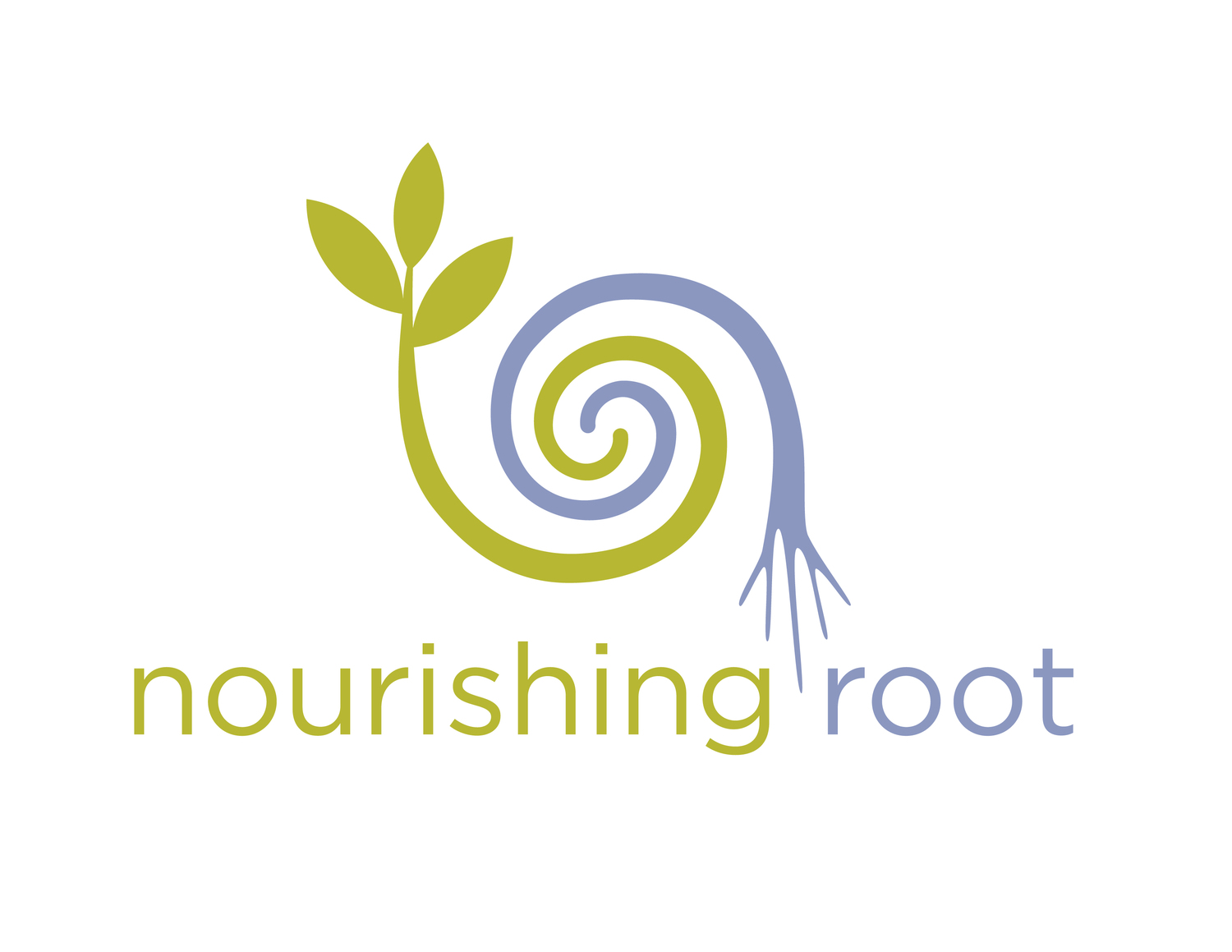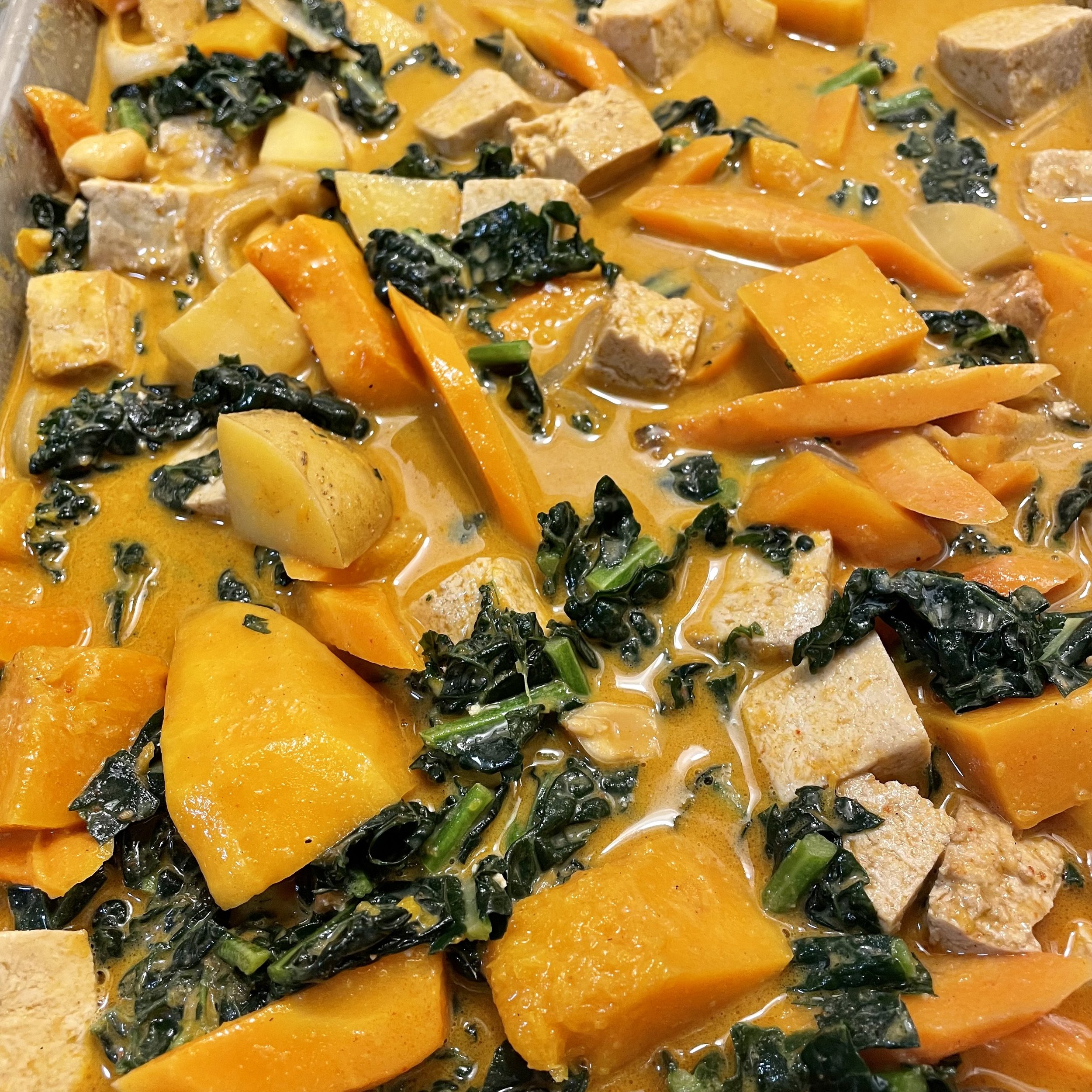There’s something about massaman curry that hits just the right spot for so many people. It won first place in CNN’s The Worlds 50 Best Foods in 2011 and 2017. That’s some strong staying power for this palate pleaser that’s been around for two centuries or more. Massaman curry is an example of successful fusion food at its best, combining flavors from Persian, Malaysian and Indian cuisine, like cardamom, cinnamon, cloves, star anise, cumin, bay leaves, nutmeg, mace, with traditional Thai flavors like, chile peppers, coriander, lemongrass, galangal, white pepper, shrimp paste, shallots, garlic, and ginger. Like all fusion recipes, there are countless variations, so not all massaman curries will have every single one of these ingredients.
The word Massaman comes from the Persian, Mosalman, meaning muslim. In the 19th century, the curry was sometimes called Mussulman curry. Some say this curry originated in 17th century central Thailand (then Siam) at the court of Ayutthaya, through the Persian merchant Sheik Ahmad Qomi. One recipe origin story says massaman curry came directly from Persian traders to the court at Ayutthaya in the 17th century during the Ayutthaya period. Another possibility is that the recipe came about slightly later in the 18th century Thonburi period in Southern Thailand’s Muslim communities. There was the largest concentration of Muslims in Thailand in this area, and the recipe could have easily developed organically among those observing Muslim culinary rules while cooking with Thai ingredients. No matter the origin, this rich and flavorful curry was usually reserved for special occasions and religious ceremonies.
It was beloved in earlier days too, and is mentioned in the late 18th century poem, “Kap He Chom Khrueang Khao Wan,” by King Rama II, then Prince Itsarasunthon of Siam:
“Massaman, a curry made by
my beloved, is fragrant of
cumin and strong spices.
Any man who has swallowed
the curry is bound to long for
her.”
Besides the impressive list of spices, massaman usually includes chicken, meat, or tofu, potatoes, onions, and peanuts. The first known recipe for massaman curry dates from 1889, called “Chicken Matsaman with bitter orange juice,” by Lady Plean Passakornrawong. In the traditional process, the curry paste is fried first with coconut milk before other ingredients are added, and sometimes, the meat is cooked first in fat. I chose to cook the tofu in oil first to remove more water from the tofu and make it more toothsome. Some versions add oranges, orange juice, pineapple juice, or another citrus juice. I wanted to taste the spices distinctly so I chose not to add a strong sour-sweet element with added fruit juice. Well-cooked tofu emphasizes the subtle sour flavor of fermentation of the tofu itself, and I was satisfied with that amount of sour flavor. If using animal protein, the curry may benefit from the cutting and lifting aspect of added citrus.
A lot of modern massaman curries dominate with sweetness, and with sweet as the primary flavor, there’s more leeway to add some sour, but I find most massaman curries are too sweet and hide the complexity of spices. To strip away the distorting power of sugar, I relied on the sweetness of ingredients themselves in onion, peanut, tofu, squash, and potato. I think this is a better way to learn about the interaction of spices on the palate. Every chef has a reference point for the painting equivalent of one brush stroke too many. I can still see mine clearly, a rainbow curry, pretty, but entirely unappealing having pushed the flavor pendulum too far: too sweet, too sour, too spicy. If you really want to add some coconut sugar or maple syrup to make this recipe more pleasurable, feel free to edit, but I encourage you to try it with no additional sweeteners.
Massaman curry is a satisfying meal, and is good for vata season’s dryness with its rich oils. Besides the oil from the coconut milk, I used coconut and toasted sesame oils. For moving into winter’s kapha season, the curry can be made with less oil if you are kapha dominant, or the same amount of fat for vata and pitta. For all doshas, the grounding vegetables and peanuts mixed with warming digestive spices make it great for cold nights. One reason massaman curry has such wide appeal is that it is very flavorful and satisfying without a lot of spicy heat. That said, kapha types may add cayenne or other chile pepper heat to add some circulatory fire to the density of the dish.
Some Recipe Notes:
I made this in the oven to cook the vegetables faster, but it can be done in a large heavy pot, like a large cast-iron pot.
Allowing the curry to cook at the end concentrates the sauce and lets spices meld.
Note that because the size of the vegetables varies, and terms like medium and large are subjective, I’ve given volume amounts in the ingredient list to make shopping estimates easier.
I did use the shortcut of working with pre-made Thai red curry paste. Massaman curry is considered a yellow curry, so this is a departure from the traditional, but practical for most.
It is a large volume, so consider that you will feed lots of people or eat this for a couple of nights still with some to freeze. If the amount feels daunting, half the recipe.
Nourishing Root’s
Massaman Curry Recipe
Ingredients:
1/3 cup coconut oil
2 packages (2 pounds) extra firm tofu, cut into 1-inch cubes
3 cups yellow onions (about 3 very large onions), cut into 1/2 inch angled quarter-moons (cut onion in half through diameter, cut each half in half again lengthwise, then make angled 1/2 inch cuts)*
3 cups carrots, peeled, cut in half lengthwise, then into 1/2 inch angled pieces
1 medium butternut squash, about 5-6 cups, cut into 1-inch dice
1 1/2 cup potatoes cubed (I used local potatoes similar to yukon gold, and any type or size of potato could be used)
1/4 cup toasted sesame oil
1/2 cup tamari
4 oz jar Thai red curry paste
1/2 cup water
1 tablespoon ground coriander
1 tablespoon dried ground ginger
2 teaspoons ground cumin seed
1/2 teaspoon ground cardamom
1/4 teaspoon ground cloves
1/4 teaspoon ground nutmeg
1/4 teaspoon cinnamon
1/2 cup organic crunchy peanut butter
1 C salted, roasted peanuts
2-13.5 oz cans coconut milk
1 large bunch lacinato kale, rough chopped into large bite size pieces
*I like this style of cut for dishes where there are long cooking large cut vegetables like carrots and potatoes, when you don’t want the onion to meld into the sauce. Large dice would also be fine, but the shape of the angled quarter moons holds up better to high heat and tends to be sweeter, having released less onion juice in the cutting than diced onions.
For serving:
Make a cooked rice of choice. I used 3 parts brown basmati mixed with 1 part wild rice blend.
Serves:
8-12 large portions, makes about 4 quarts (16 cups).
Procedure:
1. Preheat oven to 400F.
2. In a large roasting pan, add coconut oil. tofu, and onion.
3. Bake for 30 minutes. Prep other ingredients while tofu and onion cook.
4. At the end of 30 minutes, remove pan from oven, and increase oven temperature to 425F.
5. Add cut carrots, squash, potatoes, plus sesame oil, tamari, red curry paste, and water. Cook for 30 minutes.
6. Remove pan from oven, and reduce heat to 350F.
7. Add the spices, peanut butter, peanuts, coconut milk, and kale. Mix well.
8. Return pan to the oven and bake another 30 minutes.
9. Remove pan from the oven and stir. Adjust salt (or tamari) and spices to taste.
10. Serve over rice, grain, or cooked greens.
Enjoy!




